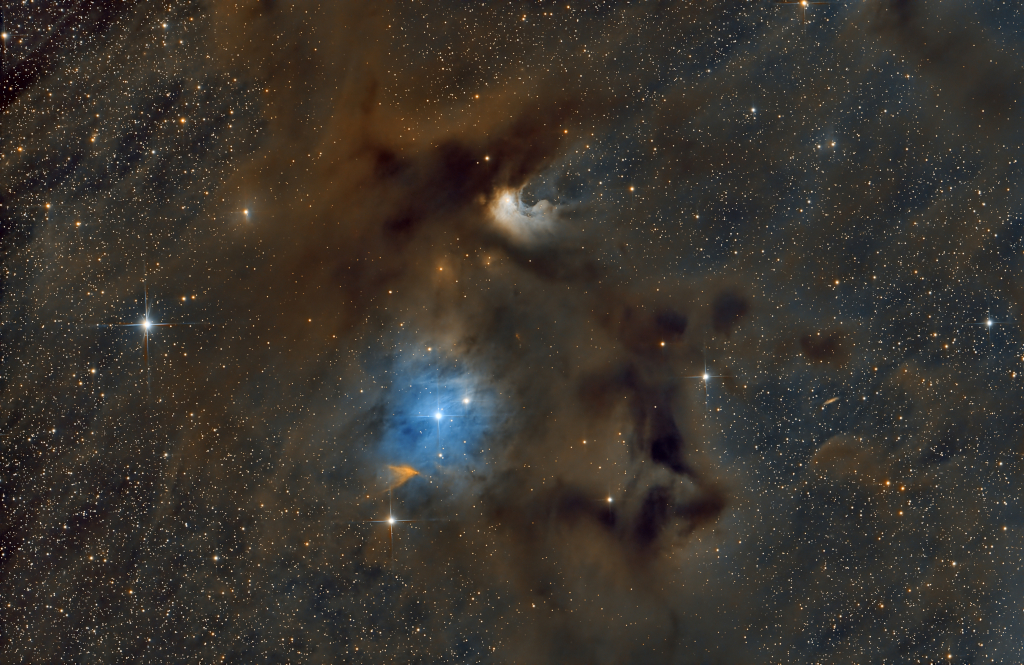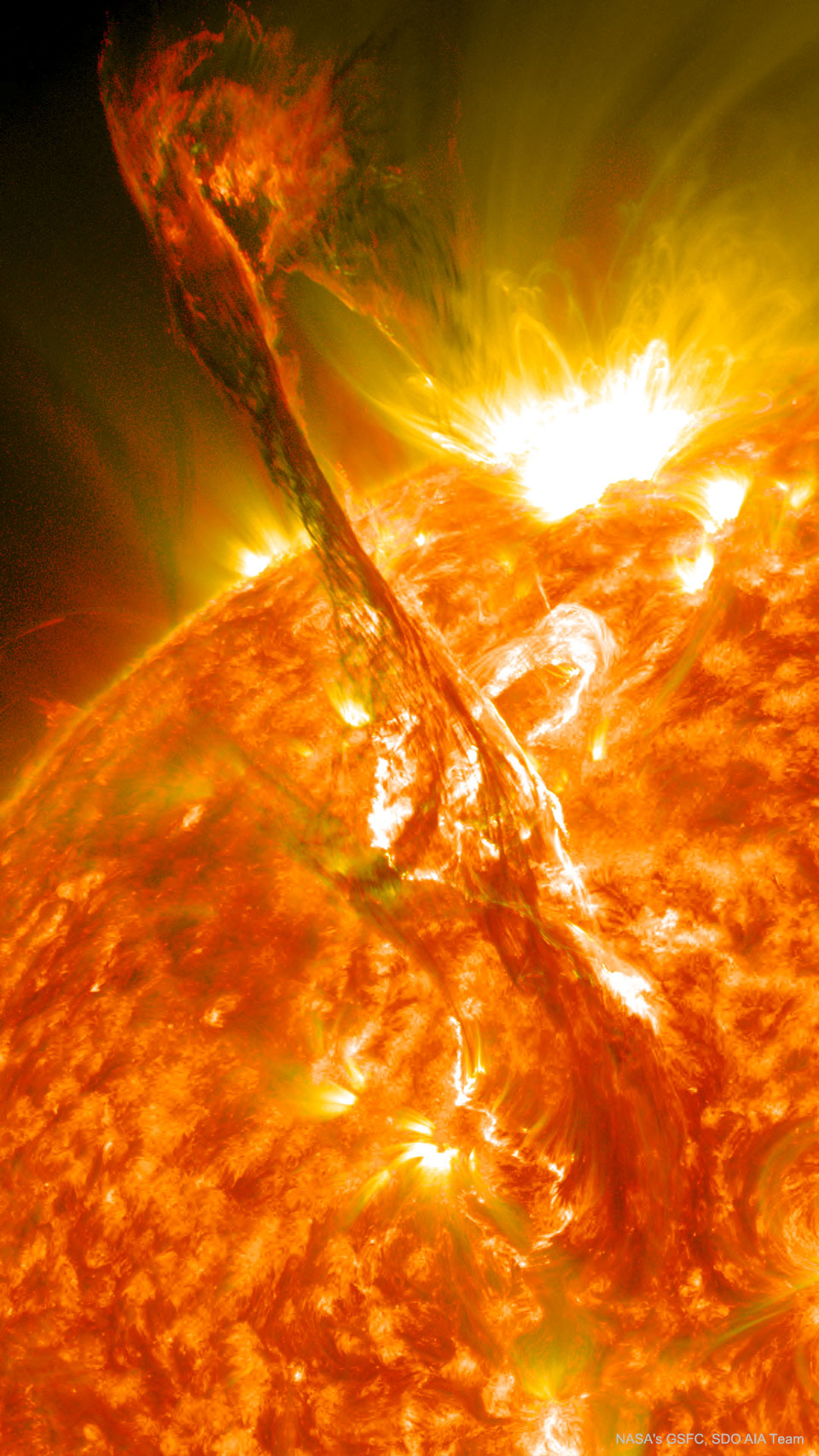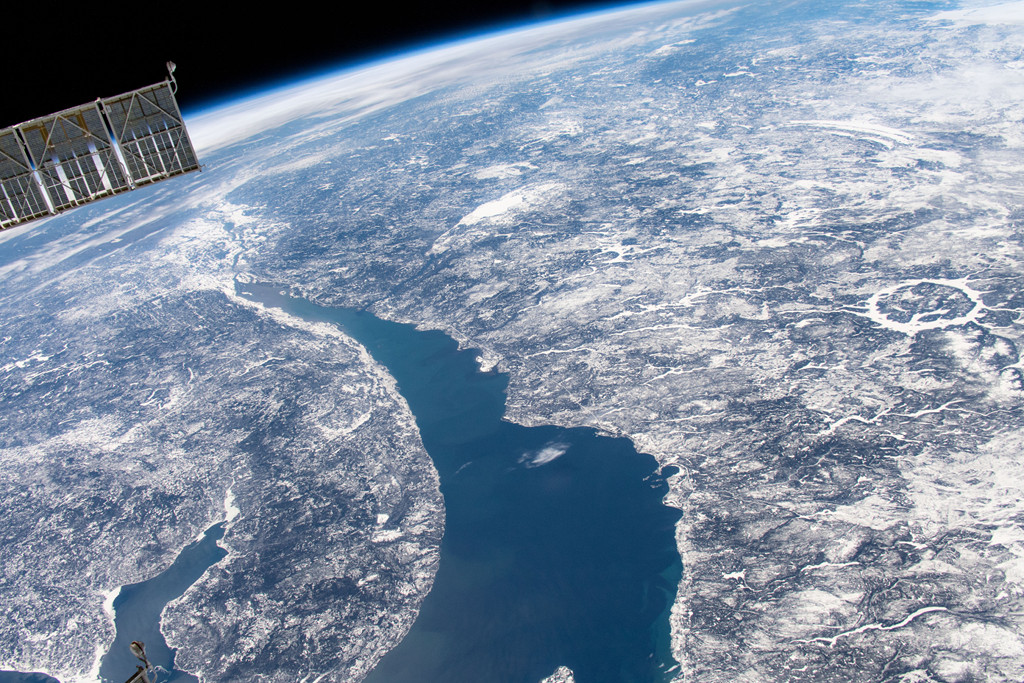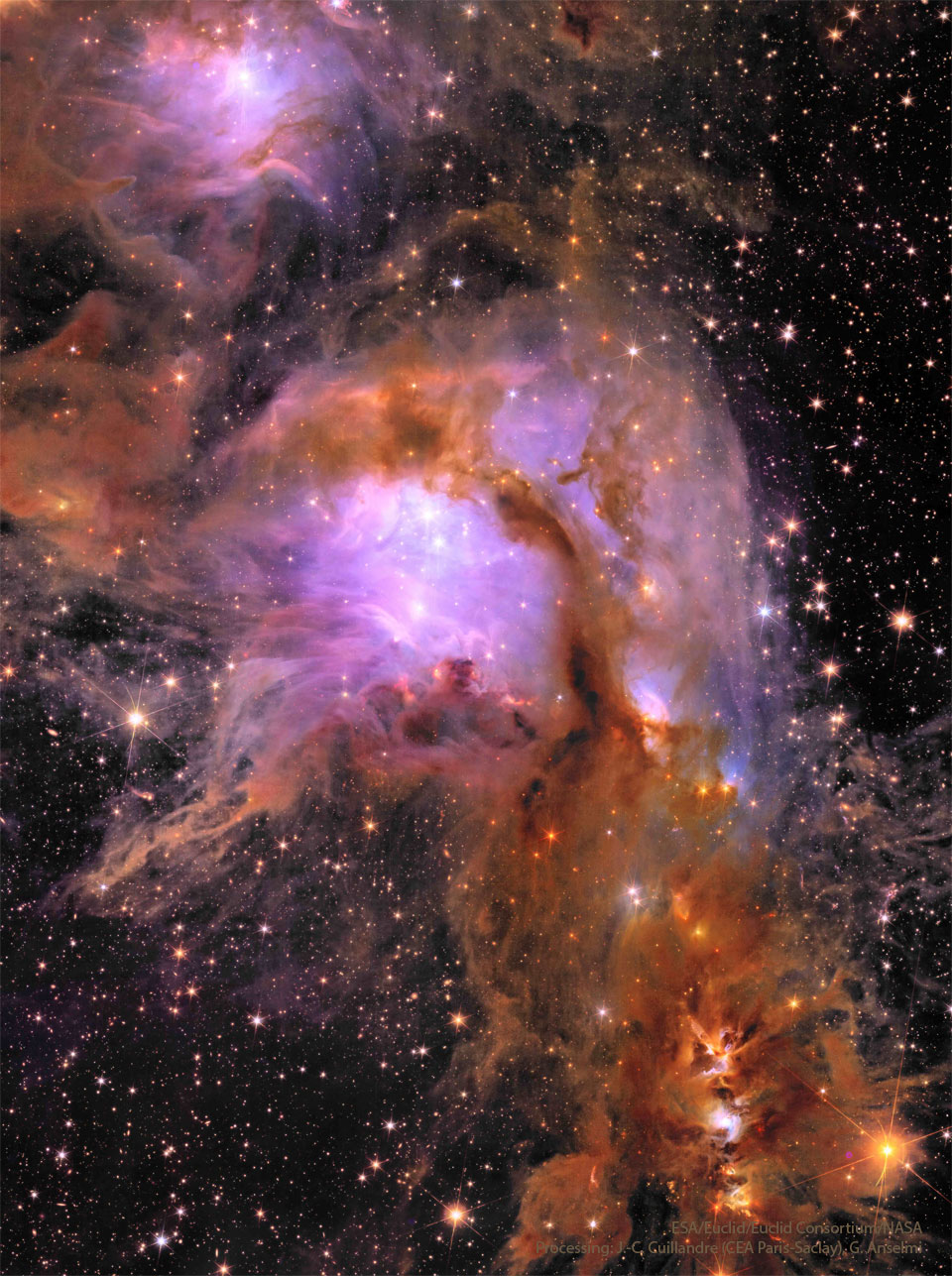Nombre total de pages vues
28/05/2024
NUCLEAIRE - Comment survivre à une explosion nucléaire ? Retirez vos vêtements contaminés
27/05/2024
ASTRONOMY - Chamaeleon I Molecular Cloud
2024 May 27
Image Credit & Copyright: Amiel Contuliano
Explanation: Dark markings and bright nebulae in this telescopic southern sky view are telltale signs of young stars and active star formation. They lie a mere 650 light-years away, at the boundary of the local bubble and the Chamaeleon molecular cloud complex. Regions with young stars identified as dusty reflection nebulae from the 1946 Cederblad catalog include the C-shaped Ced 110 just above and right of center, and bluish Ced 111 below it. Also a standout in the frame, the orange tinted V-shape of the Chamaeleon Infrared Nebula (Cha IRN) was carved by material streaming from a newly formed low-mass star. The well-composed image spans 1.5 degrees. That's about 17 light-years at the estimated distance of the nearby Chamaeleon I molecular cloud.
NUCLEAIRE - Comment survivre à une explosion nucléaire ? Les premières 24 heures: prenez une douche et restez à l'intérieur
26/05/2024
SANTé/MEDECINE - Virus et bactéries mortels - Ebola : le virus à la mortalité la plus élevée ?
NUCLEAIRE - Comment survivre à une explosion nucléaire ? Les bâtiments sur plusieurs étages
ASTRONOMY - A Solar Filament Erupts
2024 May 26
Image Credit: NASA's GSFC, SDO AIA Team
Explanation: What's happened to our Sun? Nothing very unusual -- it just threw a filament. Toward the middle of 2012, a long standing solar filament suddenly erupted into space, producing an energetic coronal mass ejection (CME). The filament had been held up for days by the Sun's ever changing magnetic field and the timing of the eruption was unexpected. Watched closely by the Sun-orbiting Solar Dynamics Observatory, the resulting explosion shot electrons and ions into the Solar System, some of which arrived at Earth three days later and impacted Earth's magnetosphere, causing visible auroras. Loops of plasma surrounding the active region can be seen above the erupting filament in the featured ultraviolet image. Our Sun is nearing the most active time in its 11-year cycle, creating many coronal holes that allow for the ejection of charged particles into space. As before, these charged particles can create auroras.
25/05/2024
NUCLEAIRE - Comment survivre à une explosion nucléaire ? Les abris idéaux
ASTRONOMY - Manicouagan Impact Crater from Space
2024 May 25
Image Credit: NASA, International Space Station Expedition 59
Explanation: Orbiting 400 kilometers above Quebec, Canada, planet Earth, the International Space Station Expedition 59 crew captured this snapshot of the broad St. Lawrence River and curiously circular Lake Manicouagan on April 11. Right of center, the ring-shaped lake is a modern reservoir within the eroded remnant of an ancient 100 kilometer diameter impact crater. The ancient crater is very conspicuous from orbit, a visible reminder that Earth is vulnerable to rocks from space. Over 200 million years old, the Manicouagan crater was likely caused by the impact of a rocky body about 5 kilometers in diameter. Currently, there is no known asteroid with a significant probability of impacting Earth in the next century. Each month, NASA’s Planetary Defense Coordination Office releases an update featuring the most recent figures on near-Earth object close approaches, and other facts about comets and asteroids that could pose a potential impact hazard with Earth.
24/05/2024
SANTé/MEDECINE - Virus et bactéries mortels - Bacillus anthracis, la bactérie à l'origine de l'anthrax
ASTRONOMY - M78 from the Euclid Space Telescope
2024 May 24
Image Credit & License: ESA, Euclid, Euclid Consortium, NASA; Processing: J.-C. Cuillandre (CEA Paris-Saclay), G. Anselmi
Explanation: Star formation can be messy. To help find out just how messy, ESA's new Sun-orbiting Euclid telescope recently captured the most detailed image ever of the bright star forming region M78. Near the image center, M78 lies at a distance of only about 1,300 light-years away and has a main glowing core that spans about 5 light-years. The featured image was taken in both visible and infrared light. The purple tint in M78's center is caused by dark dust preferentially reflecting the blue light of hot, young stars. Complex dust lanes and filaments can be traced through this gorgeous and revealing skyscape. On the upper left is associated star forming region NGC 2071, while a third region of star formation is visible on the lower right. These nebulas are all part of the vast Orion Molecular Cloud Complex which can be found with even a small telescope just north of Orion's belt.
ASTRONOMY - NGC 1898: Globular Cluster in the Large Magellanic Cloud
025 December 28 NGC 1898: Globular Cluster in the Large Magellanic Cloud Image Credit: ESA / Hubble & NASA Explanation: Jewels don...
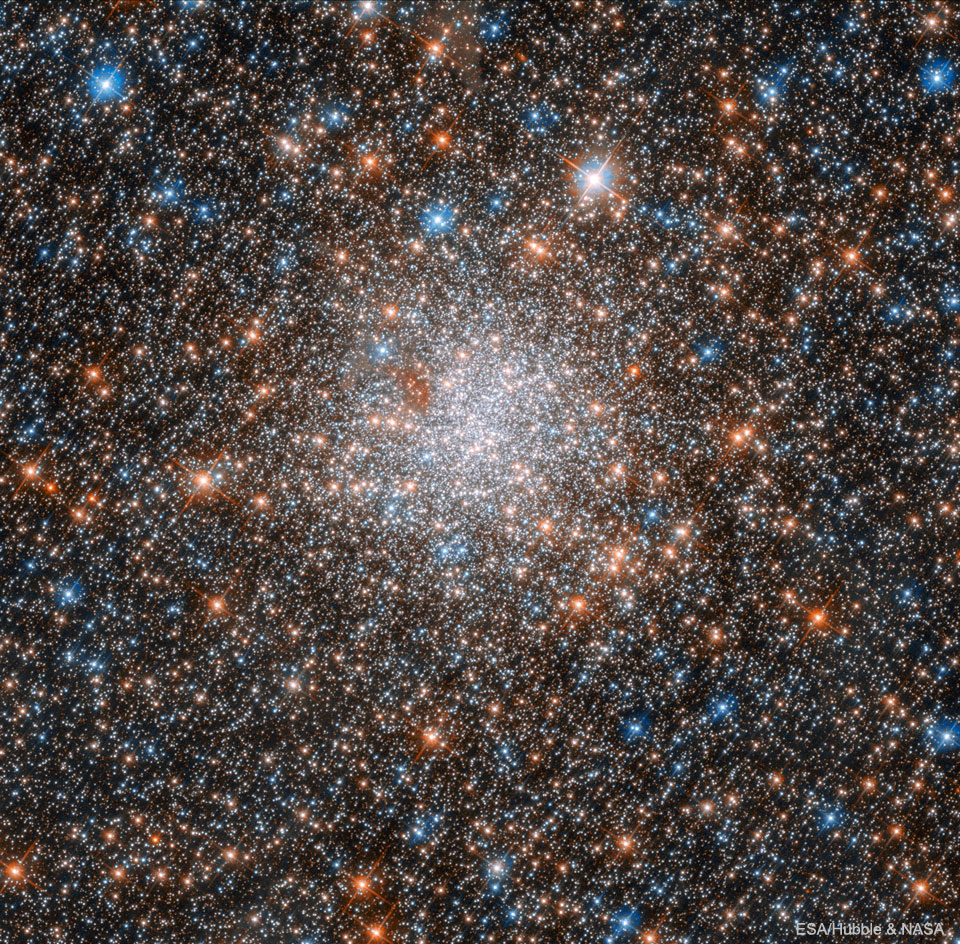
-
2022 September 26 All the Water on Planet Earth Illustration Credit: Jack Cook, Adam Nieman, Woods Hole Oceanographic Institution ; Data ...
-
2025 May 11 The Surface of Venus from Venera 14 Image Credit: Soviet Planetary Exploration Program , Venera 14 ; Processing & Copyri...

